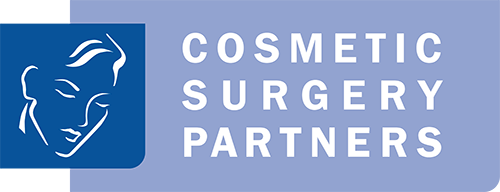Mr Andrew Douglas
MBBS, BDS, FRCS
Andrew Douglas is a fully trained and UK accredited specialist consultant facial surgeon.
Andrew Douglas is a fully trained and UK accredited specialist consultant facial surgeon.

Mr Andrew Douglas is a specialist facial surgeon in London. He gained degrees in medicine and dentistry before undertaking general and specialist surgical training in London, Oxford and Manchester before qualifying as a consultant. Before taking up an NHS consultant post he undertook additional training in paediatric cleft lip and palate surgery. He continues to visit conferences and experts around the world in order to keep up to date with the very best techniques.
Mr Douglas specializes in all aspects of facial surgery: skin cancer, trauma, corrective surgery, facial deformity as well as cosmetic surgery. His unique training purely in facial surgery including a thorough understanding of dentistry mean he can assess, diagnose and treat not just the skin and soft tissues, but also the bones of the face. He will ensure that you undergo the most appropriate procedure and not the most obvious or popular. This may include combining hard and soft tissues as well as incorporating non-surgical techniques too. If it is necessary, Mr Douglas will work with an orthodontist or dentist to help you get the very best outcome.
In 2016 he published a new technique in facial reconstruction for patients with advanced oral cancer. He has continued to be a surgical innovator helping to establish new minimally invasive techniques in major facial trauma to reduce scarring. It is this pioneering and innovative approach that he approaches cosmetic surgery to maximize results with the least scarring and side-effects.
Mr Douglas is experienced in 3D digital imaging and planning
Qualified both in medicine and dentistry he has undertaken additional training in cleft lip and palate surgery after completing his specialist training. He has pioneered new techniques in facial reconstruction as well as travelling to low-income countries for charity. He is a committed educator having been involved in delivering cosmetic training for over a decade.
Mr Douglas has taught non-surgical cosmetic facial procedures for over a decade and had work recognized in the national press including a headline story on Protox, a word he coined for patients looking to have Botox for professional reasons, such as to look less stern, rather than for anti-aging purposes. He now undertakes a wide variety of cosmetic procedures to the face and neck.
Prior to his career in medicine, Mr Douglas was a professional musician. As the worlds youngest church organist aged 8, he went on to gain music scholarships and perform internationally including for heads of state before becoming organ scholar at Gloucester Cathedral aged 16. He has also been a successful oarsman wining at top domestic regattas. He continues to row as well as coach.
Click to expand the menus below to find a brief explanation of surgical procedures performed by Mr Andrew Douglas. Some descriptions will contain links to further information on a dedicated procedure page.
Should you need more information about any of the procedures listed below or how to book a consultation please call our clinic on 020 7486 6778 or use the contact form, our award winning team are happy to advise you further,
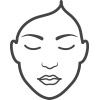
This is a short scarless procedure to create or enhance a dimple in the cheek (or chin). It is carried out under local anaesthetic from the inside of the cheek and achieves instant results.
As the name suggests, a facelift is exactly that. It lifts skin that has sagged naturally through the ageing process around the mid-face area, cheeks and down to the jawline. Small incisions are hidden in the hairline, behind the ear and inside the mouth. The muscles can then be accessed and lifted as required. It can be combined with a neck lift, and enhanced with other procedures such as fat trasfer, lip lift and blepharoplasty. This facelift does require an overnight stay, but again, side-effects are minimal. You shouldn’t be in excessive pain that can’t be handled with normal painkillers. You will, however, be advised to take 1 to 2 weeks off work to allow time for the swelling and bruising to go down.
Cheek implants can improve the facial appearance of people with an underdeveloped mid-face area, provide a permanent rejuvenating effect for those whose cheekbones have lost their fullness, and they can restore shape following cheekbone fractures. The implants themselves are pre-shaped and fitted directly onto the cheekbone. They are held in place with titanium screws. General anaesthetic will be necessary, but it’s usually only a day case procedure.
Buccal fat removal is a cosmetic surgical procedure that involves the removal of fat pads in the cheeks to create a slimmer, more contoured facial appearance. The buccal fat pads are located in the lower part of the cheeks and are responsible for the rounded, full appearance of the cheeks. The procedure is also referred to as cheek reduction surgery or buccal lipectomy.
If you are looking for something minimally invasive to refresh your looks, then the silhouette lift could be the answer. It involves inserting disposable threads into the jawline. Cones on the threads stick to the skin from the inside, so that when the thread is pulled tight, the jawline is lifted, rejuvenating the whole lower face. The results are immediate, but the rejuvenation will continue to improve further over the following weeks as the threads stimulate collagen levels and increase them. You won’t need a general anaesthetic, or an overnight stay in hospital. It takes up to an hour to administer, and your skin is sewn up using dissolvable sutures, so you won’t need a return visit.

Orthognathic, or jaw, surgery is undertaken to change the prominence of the jaws and to help the overall balance and profile of your face. This often means that patients also have a problem with their bite and are then seen by an orthodontist too. Where possible, surgery would be done first to enable drastically shorter periods wearing braces.
Orthognathic surgery can be a very effective solution to severe sleep apnoea when less invasive options have either failed or are not tolerated. Results can prove life changing.
Genioplasty is a scarless surgical solution to change the position or shape of the chin in order to improve facial appearance and balance. It can change the width, height or prominence of the chin. The procedure may involve the bottom part of the chin bone being removed and repositioned for aesthetic enhancement. An overnight stay in hospital is usual, and once the swelling has subsided, your chin will be in a position that provides your face with better symmetry, enhancing your appearance. It may be combined with Orthognathic (jaw) surgery in order to best enhance the aesthetic outcome
Chin implants is a scarless procedure that can improve the projection of your chin and give your face a better overall shape if you have a small chin. Incisions will be made in the mouth to insert the implants. They are held in place with small screws and ideal for making small adjustments. This is usually a procedure that requires no overnight stay. It should greatly enhance your facial appearance.
Mandibuloplasty is surgery to change the shape of the lower jaw. Often this is to reduce the angular shape of the jaw in male to female surgery or to achieve a more western jawline. This is often combined with a genioplasty to achieve the desired result. Surgical augmentation typically takes the form of jaw implants.
Mandibular angle implants are a solution to underdeveloped and asymmetrical jaws. The placement procedure is usually just a day case and involves a preshaped implant being fitted directly onto the jaw. To do this a small incision is made in the mouth. Titanium screws anchor the implant securely in place. Post-surgical swelling will subside after 7-10 days and you’ll be able to see your newly defined jawline.
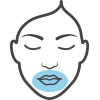
Lip enhancement can achieve accentuation of the natural features of the lip that have reduced due to ageing, augmentation of a combination of the two. Treatment options fall into two categories; permanent or non-permanent. We do not advocate permanent injections due to the long term damage to the lips.
This technique can be performed in the clinic setting under local anaesthetic using dermal fillers (“fillers”). These will typically last 6-12 months. This is often a good way of trialling treatment before committing to a permanent procedure.
Permanent lip enhancement/augmentation is to the lips what the facelift is to the face; the ultimate gold standard. These include surgical techniques pioneered by our facial sugeons that will restore your lips to their youthful glory without the need for continual repeated dermal filler injections. An additional permanent technique involves placing a Permalip implant. Your surgeon will talk you through the appropriate options. Preference will always be towards techniques using your own tissues.
As we age, the upper lip lengthens whilst loosing its projection (pout). This drop of the lip results in a gradual hiding of the upper front teeth. An upper lip lift involves a short procedure that can be carried out under local anaesthetic that will leave you with a permanent result and your smile restored and looking younger.
Lip lengthening is a short procedure that permanently lengthens a short upper lip with reduced pink show. This is typically something one is simply born with and so is typically performed on younger patients. Additional augmentation can be achieved at the same time and carried out safely under local anaesthetic.
Either how one is born or because of how the lip ages, there can be a loss of a visibly defined Cupid’s bow. It’s possible to correct this using cosmetic techniques. Our surgeons will assess your lips and discuss which of their techniques is most appropriate to achieve your new smile. All options can safely be carried out under local.
This is a simple procedure that lifts downturned corners of the mouth. This can be where a facelift is not preferred yet the corners of the mouth are a concern. It is a short procedure that can be performed under local anaesthetic that can have transformative results and with little downtime.

Excessive skin on the upper eyelid is a condition that affects many of us as we age. When this additional tissue begins to press on the lashes, it can become very uncomfortable. It’s also unsightly. Additionally, vision problems can result from the situation. Blepharoplasty can correct it. It will restore your eyelid to its former, more youthful-looking state. Not only will this rejuvenate your facial appearance, but it will also give you a boost to the confidence you have in your looks, as well as alleviate any pressure you’ve been feeling on your eye. As there won’t be anything blocking your vision any more, along with your new younger look, you’ll also be able to see more clearly.
Orbital rim implants will enhance the profile of the lower part of the eye socket where the tissues have either sunken or fallen. This can be either a natural response to the ageing process or because of how you were born. Orbital rim implants are custom manufactured following a 3D digital scan and surgically placed under a general anaesthetic to enhance your facial appearance. They are held in place with titanium screws. An overnight stay in hospital is generally not required and the initial bruising and swelling should settle within 2 weeks. The results will flatter the face and rejuvenate it.
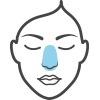
Nasal reconstruction surgery becomes necessary after major trauma to the nose, or after the removal of a tumour. It will restore the nose to its former shape and is very bespoke in its nature. The surgeon will seek to employ the most relevant techniques, whether that’s a skin graft to cover small, superficial defects, or a cartilage graft to support deep, complex repairs.

Whether your earlobes have been split due to trauma, or stretched by heavy earrings, a split earlobe repair procedure will restore the natural shape of the earlobe. Under local anesthetic, your surgeon will remove torn skin and stitch together the newly created edges. Your earlobe should be fully healed within 1 to 2 weeks.
Abnormally large, drooping, or prominent earlobes can be treated via an earlobe reduction technique. This is a short surgical procedure, performed under local anaesthetic, designed to reshape or resize the earlobe by removing excess tissue and hiding the scars. This can be carried out for both congenital (present from birth) and age related reasons.
Pinnaplasty typically refers to the correction of prominent (commonly call “Bat”) ear and involves having your ears ‘pinned back’. It correctly includes any surgery to change the appearance of the ears. If you’re self-conscious about the size or shape of your ears, as well as how prominent they are, this procedure is designed to improve your overall appearance, as well as how you feel about your ears. Depending on the complexity of what you desire, it may be necessary to take tissue grafts from other parts of the body.
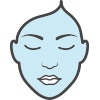
If you are having a skin cancer removal, you may benefit from having your reconstruction performed by a cosmetic facial surgeon. This will typically be if it is either in a difficult part of the face, or because of its size.
Difficult areas of the face are the eyes, ears, nose and lips and the areas around them. Along with larger cancers, these will often require ingenious techniques to ensure the best cosmetic result such as a flap (moving nearby skin around to hide the “hole”). In most cases this can be routinely carried out under local anaesthetic.
There’s a whole variety of moles, lumps and bumps that can be found on the face that you may wish to have removed for cosmetic reasons. Some will develop with age, while others you might have had for as long as you can remember. In the first instance, we’ll need to check that your lesion (the patch, lump, mole or “thing”) is benign, as this will play a huge part in the type of treatment you’ll receive. If you have a lesion you are particularly concerned about, it’s best not to delay your consultation with us. This will prevent giving potential skin cancers the chance to spread.
Some benign skin conditions or lumps and bumps are easily treated with non-invasive cosmetic treatments such as creams or cryotherapy (freezing off), while others will need excising (surgical removal).
If you have a swelling, a lump, or a mole, that has changed its appearance, or is uncomfortable, or even painful, please come and have it checked out as a matter of urgency.
Scar revision is undertaken to improve the visible appearance of a scar. Scars are the result of healing to the skin and the underlying tissues following trauma, surgery, acne, burns, or other tissue damage.
Scar revision can be undertaken surgically, non-surgically or using a combination of both techniques. The goal of scar revision is to achieve a more aesthetically pleasing appearance recognising it is not possible to turn back time to before the tissue injury.
The success of scar revision varies depending on the nature and position of a scar, the technique(s) used and individual factors such as skin type, age, and overall health and lifestyle.
